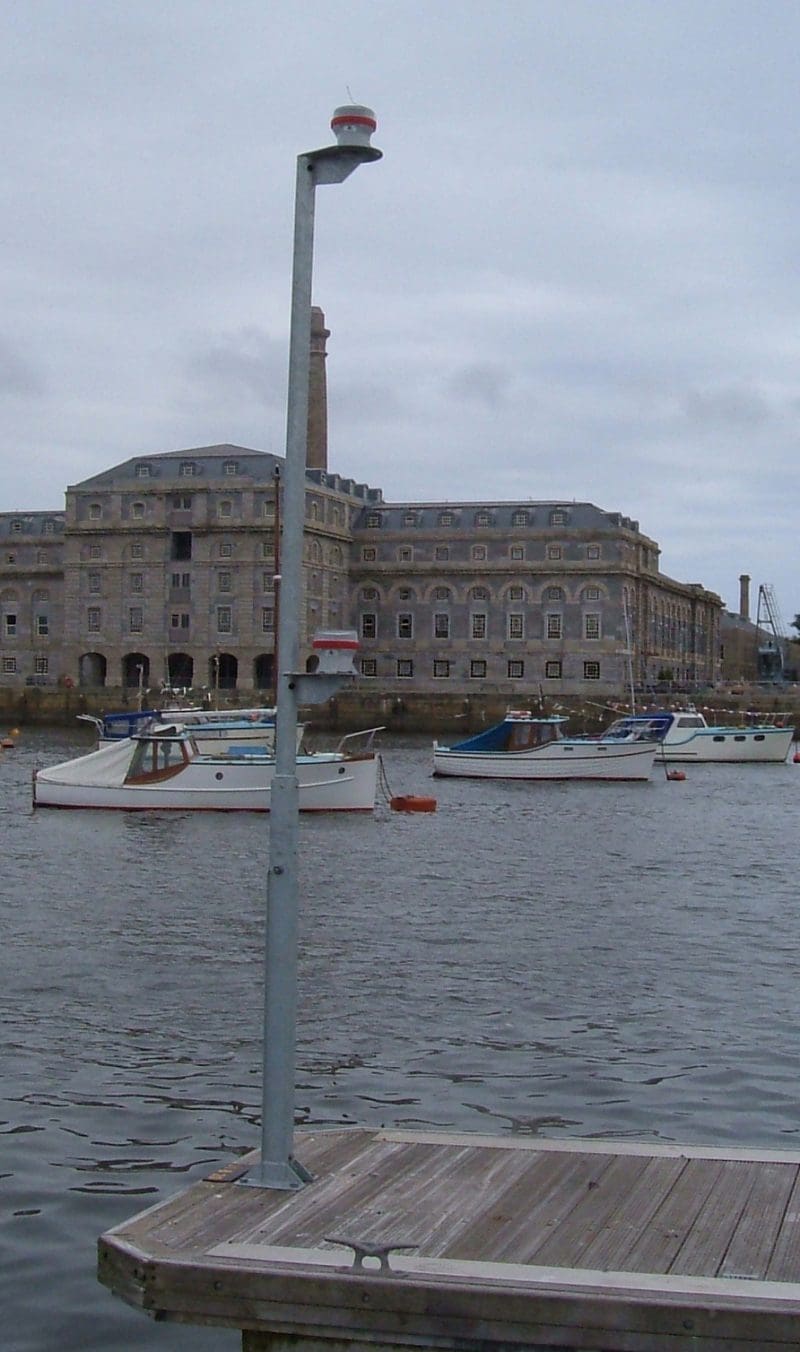When choosing a navigation light for an onshore or offshore fixed structure, the first consideration should be the range required. If 5 NM or less, it may be possible to use a self-contained solar-powered light. These lights are simple to install, easy to use and do not need a separate power supply installed. If a mains or solar power supply already exists, then a standalone light can be used.


If the light needs to be placed in a shaded position — for example, under a bridge — then a separate mains or solar power supply will be required, and the solar power supply would need to be positioned in adequate direct sunlight.
The range of a light can be increased by reducing the vertical divergence (beam width). The greater divergence is typically used on buoys to compensate for any rocking at sea, whilst the narrower divergence is used on fixed structures. If range is not a key requirement, a wider divergence light can be used on a fixed structure to increase the spread of light at close ranges.
Where mains power is available, it is usually chosen in preference to a separate solar-powered supply. Most LED lights require a 12 VDC power supply, so the mains is typically used to charge the batteries that power the light. The batteries provide a backup in the event of mains power being temporarily lost. It is also possible to transform the mains down to 12 VDC. Where mains power is not available, a standalone solar power supply will be required.
Hydrosphere offers a selection of solar-powered and standalone navigation lights for fixed structures, with a choice of vertical divergence.
For additional information, please contact Hydrosphere to discuss your requirements.







